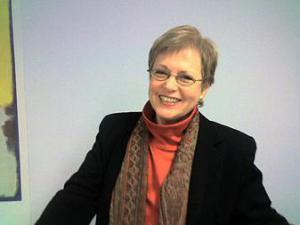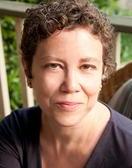
Sheila Gordon, President of Interfaith Community
Yesterday, researchers from Brandeis University released a report on millennials who grew up in interfaith families and applied to Birthright. The report was funded in part by Birthright, the program to send young people with at least one Jewish parent on a free trip to Israel, so the conclusions must be read in that light. However, since very few studies (besides my own) have been conducted on children of interfaith families, each study is valuable, even if it represents a particular viewpoint. Sheila Gordon, co-founder of the original NYC program providing interfaith education for interfaith children, attended the release event. I invited her to report on the release of the study.–SKM
A new study of the growing interfaith population was released yesterday: Millennial Children of Intermarriage. Interfaith Community/IFC was represented at the presentation by Sheila Gordon, IFC President (and Jewish partner in an interfaith marriage for forty years) and by IFC interfaith intern Ben Arenstein–a millennial interfaith child himself and currently a second year student in a joint degree at Columbia College and the Jewish Theological Seminary.
Produced by the Cohen Center at Brandeis, the study–subtitled “Touchpoints and Trajectories of Jewish Engagement”–looked particularly at the impact of Birthright (which has taken half a million young adults to experience Israel) and college programs like Hillel and Chabad. The study found that engaging in such programs can powerfully strengthen Jewish identity and participation. In short, it is not too late to engage people religiously who are 20 or 25 years old. In fact, Brandeis researchers found that the more different types of Jewish experience in college (i.e., college-based formal and informal experiences and Birthright) the more likely the interfaith millennials are to be as engaged Jewishly as millennials from inmarried families. (The only category in which this was largely not the case was the comprehension of Hebrew by interfaith millennials–which remained low despite Jewish involvement in college.)
The Jewish identity of millennials, as the Brandeis study has confirmed, undergoes a heavily formative period during college years. Post-secondary education–a time wrought with experimentation and change–also serves as an opportunity for Jews to explore their identity. Because millennials of typical interfaith families tend to have limited involvement in Jewish social interactions and Jewish formal education before college, time at university can in many cases serve as a transformative period in which interfaith children now have both access to Jewish programming and the means to independently pursue that programming without parental oversight.
The authors of the study see it as leading to a reframing of Jewish communal policies about intermarriage and new paradigms for understanding the implications of interfaith marriage. What particularly impressed Sheila and Ben were the observations that any programs that are developed need to take into account the perceptions of these interfaith millennials:
- They appear to define their Jewishness in a way that is different from those raised in entirely Jewish homes–specifically that, while they may see themselves as strengthening their Jewish identity, they proudly see themselves as multi-cultural–and, in turn, they are often dismayed by ethno-centric attitudes. So we may be seeing a different kind of Jewish identity.
- They are often hesitant to become Jewishly involved because of elitism and stigmas against interfaith children by the larger Jewish community.
- They and their families–in order to develop their religious and cultural identity–need to feel that the community in which they are developing that identity has to be open and supportive.
In addition, Ben would encourage the policy makers to bear in mind that this survey is not just a collection of data points, but based on a set of real individuals, each of whom has come to terms with his/her interfaith identity in unique and very personal ways. To help someone along that journey is a beautiful thing, but to use data sets to push them in a certain direction is to undermine the individuality of that person.
Sheila told those gathered that the findings further underscore the value of dual-faith education programs (such as provided by IFC and IFFP) for interfaith families. Educating young children ( and, in turn, their parents) about both heritages provides the supportive community and respect for the individual journeys that are essential. Young adults who wish to continue their journeys in college are better prepared both intellectually and emotionally to do so. She urged those present to support dual-faith education programs and communities.
Susan Katz Miller’s book, Being Both: Embracing Two Religions in One Interfaith Family is available now in hardcover, paperback and eBook from Beacon Press.

